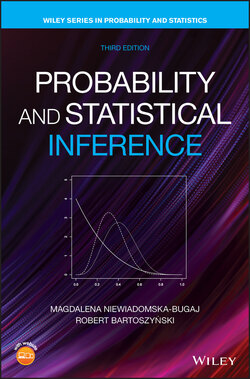Читать книгу Probability and Statistical Inference - Robert Bartoszynski - Страница 64
Example 2.7 Densities
ОглавлениеA very common situation in probability theory occurs when . A probability measure on can be defined as follows: let be a function such that for all and . We will assume in addition that is continuous and bounded, although those conditions can be greatly relaxed in general theory.
We now define probability on by putting
(2.12)
(in this case, is referred to as a density of ). The full justification of this construction lies beyond the scope of this book, but we will give the main points. First, the definition (2.12) is applicable for all intervals of the form , and so on. Then we can extend to finite unions of disjoint intervals by additivity (the class of all such finite unions forms a field). We can easily check that such an extension is unique; that is,
does not depend on the way interval is partitioned into the finite union of nonoverlapping intervals . This provides an extension of to the smallest field of sets containing all intervals. If we show that defined this way is continuous on the empty set, then we can claim that there exists an extension of to the smallest ‐field of sets containing all intervals.
Now, the decreasing sequences of intervals converging to the empty set are built of two kinds of sequences: “shrinking open sets” and “escaping sets,” exemplified as
and
We have here and . In the first case, , where is a bound for function . In the second case, .
